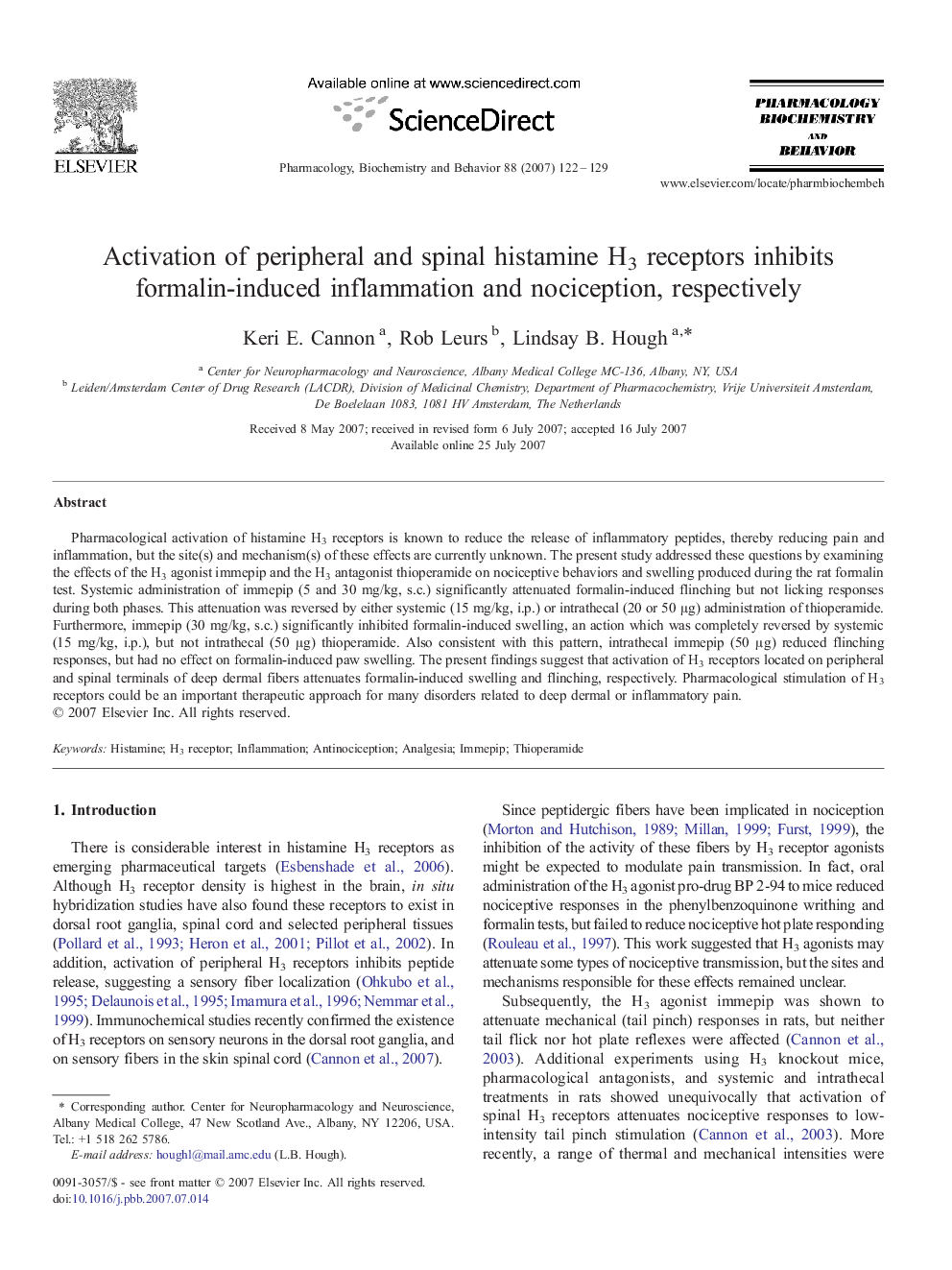| Article ID | Journal | Published Year | Pages | File Type |
|---|---|---|---|---|
| 2013774 | Pharmacology Biochemistry and Behavior | 2007 | 8 Pages |
Pharmacological activation of histamine H3 receptors is known to reduce the release of inflammatory peptides, thereby reducing pain and inflammation, but the site(s) and mechanism(s) of these effects are currently unknown. The present study addressed these questions by examining the effects of the H3 agonist immepip and the H3 antagonist thioperamide on nociceptive behaviors and swelling produced during the rat formalin test. Systemic administration of immepip (5 and 30 mg/kg, s.c.) significantly attenuated formalin-induced flinching but not licking responses during both phases. This attenuation was reversed by either systemic (15 mg/kg, i.p.) or intrathecal (20 or 50 μg) administration of thioperamide. Furthermore, immepip (30 mg/kg, s.c.) significantly inhibited formalin-induced swelling, an action which was completely reversed by systemic (15 mg/kg, i.p.), but not intrathecal (50 μg) thioperamide. Also consistent with this pattern, intrathecal immepip (50 μg) reduced flinching responses, but had no effect on formalin-induced paw swelling. The present findings suggest that activation of H3 receptors located on peripheral and spinal terminals of deep dermal fibers attenuates formalin-induced swelling and flinching, respectively. Pharmacological stimulation of H3 receptors could be an important therapeutic approach for many disorders related to deep dermal or inflammatory pain.
